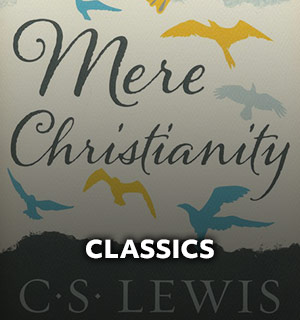
A few keys unlocked a world of understanding for me as I studied Jesus’ teachings and miracles in the landscape of Matthew’s Gospel.
By Kelly Minter
I recently visited a 2,500-acre tree farm in Western Oregon. My new friend Steve drove me through the property he and his wife have owned and managed for over 50 years. We meandered through a seemingly endless blur of trees, which to him were more precisely Douglas firs, junipers, and bigleaf maples. He could read tree rings like novels, each one telling a story of seasons. Where I saw trunks, he saw future log cabins. Steve not only saw the details of bark and foliage, but he knew how to interpret their forms and fungus. They informed his understanding and decision making.
For those of us who spend a lot of our time in the forest of Scripture, we too must be similarly informed. Historical context, original language, and literary devices of the biblical authors help us gain an understanding of Scripture’s fullest intent. If we know what the writers meant to expound then, we’ll better know what their message means for us today.
“Historical context, original language, and literary devices of the biblical authors help us gain an understanding of Scripture’s fullest intent.” — Kelly Minter Click To TweetUnderstanding the Sermon on the Mount
I must admit that up until the past several years, Jesus’ Sermon on the Mount felt like an unrelated string of nearly impossible teachings I couldn’t always make sense of. Talk of plucking out eyes, cutting off hands, and possessing a superlative righteousness to that of the squeaky-clean Pharisees was less than welcoming for me.
And the Beatitudes were their own set of problems. Should we dash out and try to get persecuted so we can be blessed? How are the mourners and the poor the fortunate ones? Wonderful teachers and scholars handed me a few keys that eventually unlocked a world of understanding for me, most of which I expound on in my devotional, The Blessed Life: A 90-Day Devotional Through the Teachings and Miracles of Jesus. Like Steve leading me through his tree farm, they led me through the landscape of Matthew’s Gospel.
Noticing literary devices
First, these resources helped me notice literary devices. It was Matthew who first paired Jesus’ famous teachings (Matthew 5–7) with His 10 handpicked miracles (Matthew 8–9). We know this because in Matthew 4:23 and again in 9:35, the Gospel-writer says Jesus preached the good news of the kingdom, taught in the synagogues, and healed every sickness and disease. Matthew’s repetition is a literary device that scholars call an “inclusio.” In between these two verses, Matthew shows us what he’s told us. Perhaps one of the things Matthew was communicating is that we best digest Jesus’ teachings in the Sermon on the Mount alongside His compassionate healings and powerful miracles, and vice-versa.
We also can identify that Matthew didn’t necessarily work in chronological order when relaying Jesus’ miracles. Instead, he ordered them in a way that shows us certain things about Him. For example, the first three miracles Jesus performs in chapter 8 have to do with a religious outcast (a leper), an ethnic outcast (a Roman centurion), and a gender outcast (Peter’s mother-in-law). Matthew wants us to see Christ’s radical love and compassion for the outsider.
“The Gospel of Matthew wants us to see Christ’s radical love and compassion for the outsider.” — Kelly Minter Click To TweetStudying original language
Digging into the original language was also quite helpful. While I haven’t studied Greek or Hebrew, I am grateful to lean on the work of scholars, concordances, and Bible dictionaries. One helpful word is macarios, the Greek word for “blessed” in the Beatitudes. The word means flourishing, happy, and fortunate. Perhaps most importantly, it’s a description of a state of being, as opposed to a blessing someone pronounces upon another. In other words, when Jesus says the poor in spirit are blessed because theirs is the kingdom of heaven, or the pure in heart are blessed because they will see God, He’s describing a way of life. He’s saying, “Don’t lament these particular hardships, because you are the flourishing ones in the kingdom of God.” This is wisdom literature. The Beatitudes are antigravity truths that float up when the harshness of life crashes down.
Gaining historical context
Lastly, insight gained from the historical context cannot be overstated. We remember that Jesus’ listeners were the poor and oppressed—the trampled on by Rome. His disciples were anything but the religious elite. How striking that Jesus would call them the salt and light of the world (Matthew 5:13-16). And what about Jesus saying that He Himself was the fulfillment of the law (Matthew 5:17)? From a historical perspective, think of how astounding a statement like this was. Where everyone would have expected Jesus to say that the Torah or the temple was central, He instead said all of Israel’s hope and righteousness is fulfilled solely in Himself.
“The Beatitudes are antigravity truths that float up when the harshness of life crashes down.” — Kelly Minter Click To TweetThe blessed life
When we follow Jesus down the mountain where He taught and into a sea of broken humanity where He restored and redeemed, we are equally enlightened by the culture and customs of the day. To touch a leper was to make oneself ceremonially unclean. Imagine the barriers through which Jesus barreled when he not only healed but touched the leper’s diseased hand. What about the trip to the Gentile region of the Gadarenes, where Jesus brought His Jewish disciples to a land of pig farmers, tombs, and demon oppression—all of which were on the Jewish “don’t touch” list. And how much more does Jesus stilling the storm mean to us when we realize that according to the Old Testament Scriptures, only God has the power to tame the seas? How richly all of this speaks about Jesus’ nature, character, and being.
Studying the historical context and original language and being aware of literary devices opened up a world of practical understanding for me throughout Matthew 5-9. Jesus’ teachings and miracles began to take individual shape. One passage informed another. But thankfully my journey didn’t stop there. I was no longer rushing through Jesus’ Sermon on the Mount as though on a bicycle whizzing by a scrim of trees. I had stopped to notice the details as if I were admiring leaves on an ancient oak. In turn, the commands and exhortations of Jesus took root in my heart. His healing touch lifted my spirits. His miraculous powers fortified my faith. It turns out, this really is the blessed life.
For permission to republish this article, contact Marissa Postell Sullivan.

Kelly Minter
Kelly is a Bible teacher, author, and singer/songwriter with a desire to serve women of all ages. She has found deep hope and healing through the Bible’s truths, making her message personal and relational. Along with her love of Scripture, at the core of her ministry is a deep affection for worship, prayer, and missions. She also partners with Justice & Mercy International, an organization that cares for the vulnerable and forgotten in the Amazon and Moldova.









